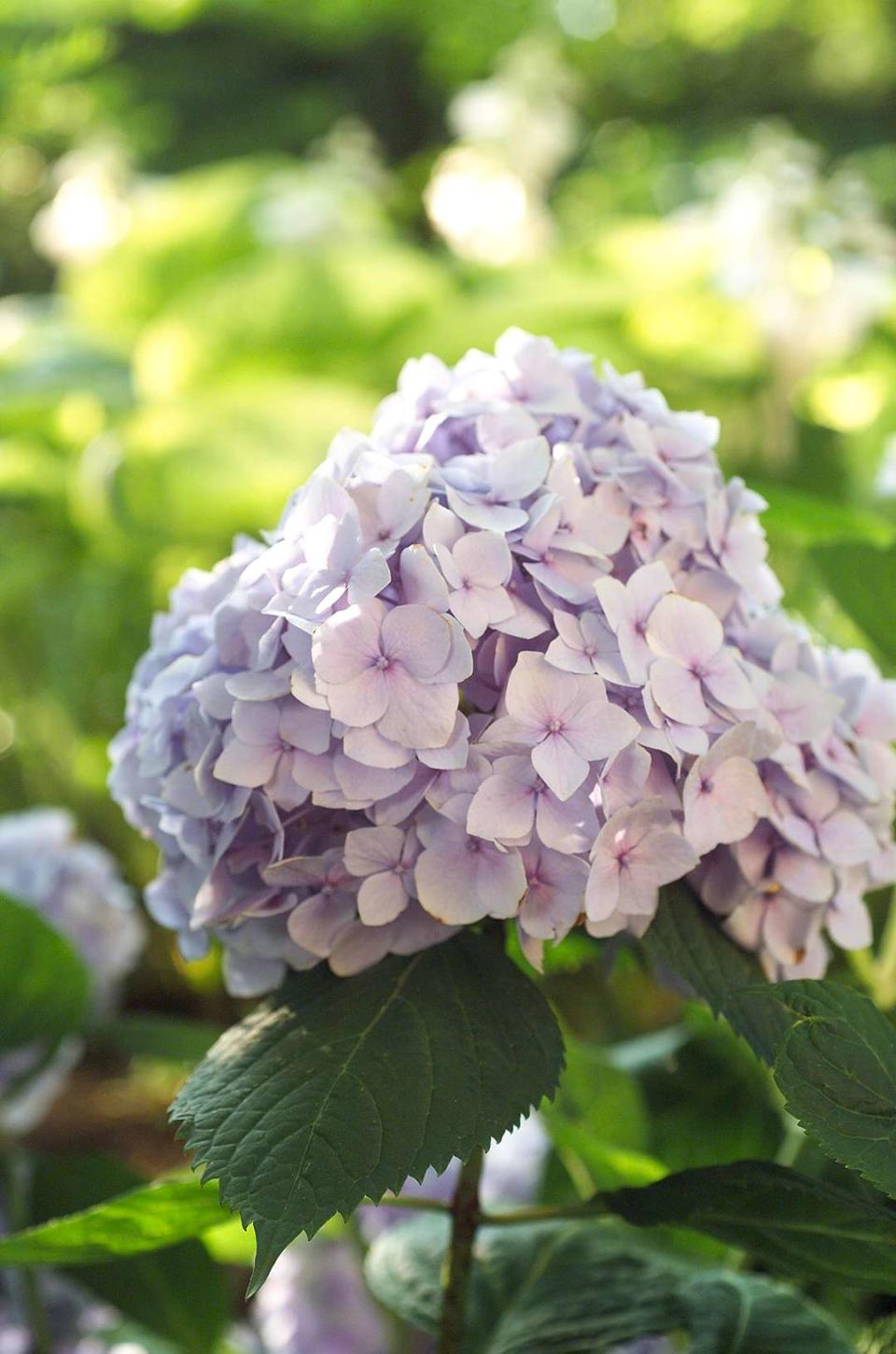Fertilize Hydrangeas Like a Pro with These 6 Tips
Get more flowers by knowing exactly how and when to fertilize hydrangeas.

Hydrangeas are such a joy to grow. They require minimal care as long as you’ve planted them in the right spot for the type of hydrangea that you’ve selected. The reward is an impressive summer-long flower show, with blooms that are equally gorgeous in the garden, on a patio in a decorative pot, or indoors as a stunning cut flower arrangement. With just a little TLC, your hydrangeas will get better each year. But for the best blooms, you need to fertilize hydrangeas properly. For the most stunning show of those beautiful blossoms, follow these simple tips for fertilizing hydrangeas.

1. Don’t fertilize at planting time.
There is no need to add additional fertilizer when you plant a hydrangea. If you purchased the plant from a nursery, the soil it’s growing in usually still contains sufficient slow release fertilizer for now. Simply keep your new hydrangea well watered, provide a layer of mulch, and give it a chance to become established in your garden.
Related: 8 Surprising Hydrangea Facts You Probably Didn't Know
2. Start fertilizing the year after planting.
There are several different types of hydrangeas—bigleaf, panicle, smooth, oakleaf, mountain. All these types should be fertilized at least once a season in late winter or early spring, certainly by the time new growth begins to show around the base of the plant.
Bigleaf, mountain, and smooth hydrangeas—especially the reblooming varieties that produce flowers on both old and new wood—will benefit from a second application of fertilizer in mid-summer. It takes lots of energy to make all those flowers!
For hydrangeas that have overwintered in containers, a single spring application of slow-release fertilizer is sufficient.
3. Select the best fertilizer for hydrangeas.
The best fertilizer for hydrangeas is a slow-release product that provides essential nutrients such as nitrogen, phosphorus, and potassium to the plants gradually over several months. They also do best with a formulation that encourages flower production. Balanced granular fertilizers such as Espoma Rose Tone and Holly Tone are good choices. Jobes Fertilizer Spikes are another good option.
Avoid using fast-release fertilizers in liquid form on hydrangeas. These products can stimulate growth in the short term but may not sustain the plant for the long haul. This type of fertilize also tends to spur vegetative growth rather than flowers.
Related: This Is the Best Fertilizer for Endless Summer Hydrangeas
4. Apply the correct amount of fertilizer.
Always follow the instructions on the label of the fertilizer product you are using, especially when it comes to the amount to use. Apply the slow-release fertilizer on the soil surface beneath the entire spread of your hydrangea's branches. If you are making two applications, split the recommended amount in half and apply that amount each time. Water the plants well after the fertilizer application.
Don’t let the fertilizer come in direct contact with your hydrangea's foliage—some fertilizers can cause leaves to burn.
5. Don't overfeed your hydrangeas.
Too much fertilizer—especially formulas high in nitrogen—can result in lush foliage but few blooms. And that’s certainly not what you’re after. If you experience a year of lush vegetative growth and few flowers, skip fertilizing your hydrangeas until the following year.
Related: Hydrangeas Not Blooming? 7 Reasons Why and How to Fix the Problem
6. Stop fertilizing in August.
Don’t apply fertilizer to any type of hydrangea after mid-August. You don’t want to encourage late season growth that is more sensitive to winter damage. This is especially important for types of hydrangeas that set flower buds on the previous year's growth (old wood). If that growth dies in winter, you'll get fewer flowers the next year.
Frequently Asked Questions
Which fertilizer should I use to change the color of my hydrangea flowers?
Technically it isn't a type of fertilizer that changes hydrangea flower colors, it's soil amendments that change the soil pH. Also, only bigleaf or mountain hydrangea flower colors are affected by pH. If you want pink hydrangea flowers, apply garden lime, which raises soil pH. For blue hydrangea flowers, add aluminum sulfate to the soil, which lowers pH.
Is there a homemade fertilizer for hydrangeas I can use?
Homemade compost is a great source of slow release nutrients for hydrangeas. Either top dress the soil beneath your plants with your compost and water well or brew up a batch of compost tea and give your plants a deep drink of it. You can repeat your application of compost tea in 2 to 3 weeks.
For more Better Homes & Gardens news, make sure to sign up for our newsletter!
Read the original article on Better Homes & Gardens.

